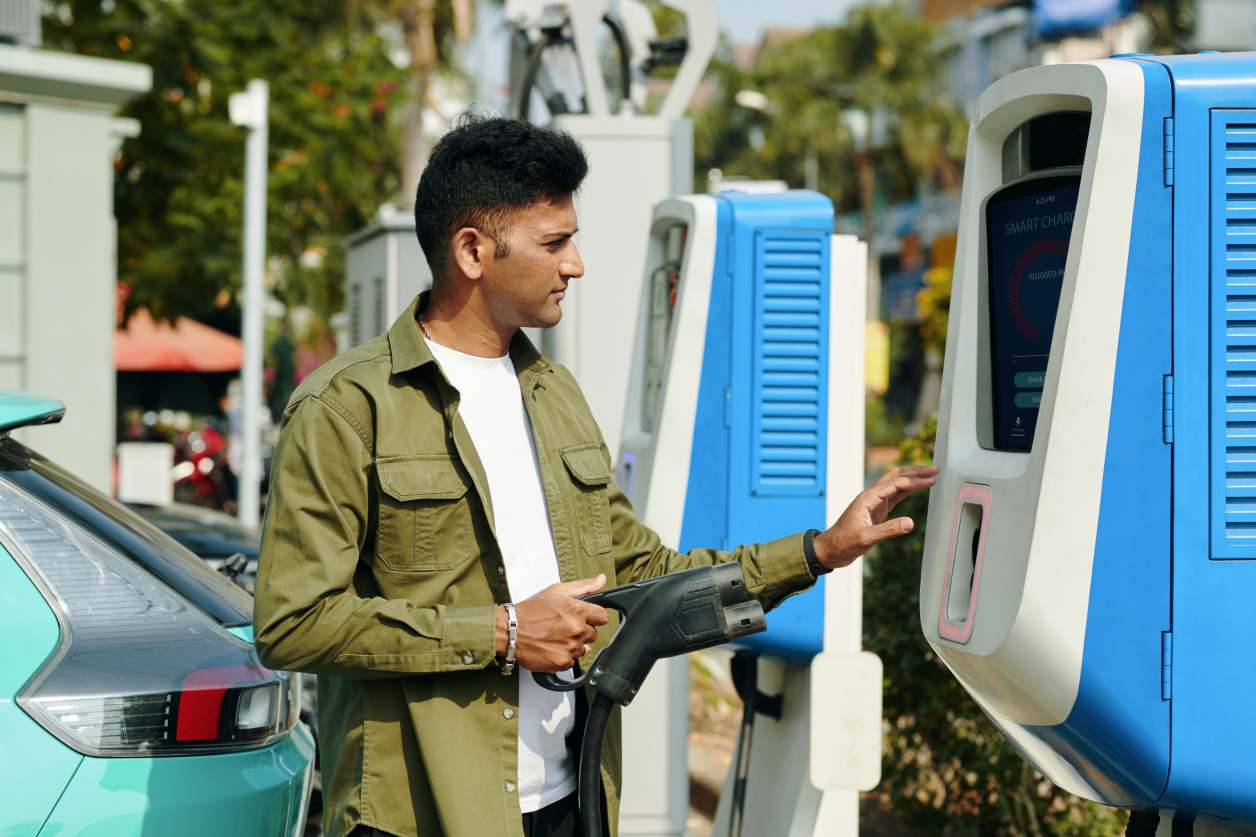9000+ Cashless Garages
96% Claims Settled (FY 24-25)

9000+ Cashless Garages
96% Claims Settled (FY 24-25)



Electric vehicles (EVs) are being increasingly adopted in India due to increasing demand for greener and cheaper modes of transportation. Central and state governments provide various subsidies and incentives for EV adoption.
However, such schemes differ from state to state, so buyers need to know the same in their region. This article gives a breakdown of electric vehicle subsidies across various states in India to help you make informed choices for a greener tomorrow.


The states in India have their subsidy criteria for providing subsidies to make them more attractive to consumers. Here is the list of states and their subsidy criteria for cars and SUVs:
Similarly, states in India have their subsidy criteria for providing subsidies to scooters and bikes. Here is the list of states and their subsidy criteria for scooters and bikes:
The states in India also have their subsidy criteria for providing subsidies to commercial vehicles. Here is the list of states and their subsidy criteria for commercial vehicles:
Faster Adoption and Manufacturing of Hybrid and Electric Vehicles (FAME) subsidy is one of the revolutionary schemes to speed up the country's adoption rate of electric vehicles. It was launched in 2013 as part of the National Mission on Electric Mobility.
FAME has become a flagship program for the future of green transportation in India. In 2020, the National Electric Mobility Mission Plan further modified the FAME. This program promotes the consumption of electric and hybrid automobiles.
It is economically beneficial to make EVs accessible as they spur local production and the development of an adequate charging infrastructure. Besides, FAME attempts to generate employment as part of economic growth with a concern for environmental sustainability.
The Faster Adoption and Manufacturing of Electric Vehicles (FAME) India scheme's first phase, FAME 1, was initiated in 2015. It provided financial assistance to the buyers of electric vehicles to encourage the adoption of electric and hybrid vehicles.
It was sanctioned with a budget of ₹895 crores for the subsidies of electric two-wheelers, three-wheelers, four-wheelers, light commercial vehicles, and buses. The scheme also supported pilot projects, R&D, and the development of charging infrastructure.
By the end of FAME 1, in March 2019, more than 2.78 lakh electric vehicles had benefited, and 465 e-buses were sanctioned for public use.
FAME 2 was launched in April 2019. This is much more inclusive than its predecessor, FAME 1. It was initially allocated with a budget of ₹10,000 crores, which was later increased to ₹11,500 crores.
This program focuses on commercial electric vehicles and public transport, comprising buses, three-wheelers, and registered e-rickshaws. It also promotes the personal use of two-wheelers. The scheme incentivises battery capacity for most categories at ₹10,000 per kWh, while ₹20,000 per kWh is applied to electric buses.
The program also supports the charging infrastructure. The rollout of FAME 2 has been extended until March 2024, continuing support for a smooth transition towards cleaner mobility.
The FAME subsidy awards incentives to Indian consumers and manufacturers in favour of using EVs. Here's how it works:
The subsidy amount is based on an electric vehicle's battery capacity. The incentive is disbursed at purchase, reducing the buyer's initial cost. Subsidies are applied at the point of sale by an authorised dealer.
The subsidy amount depends upon the vehicle type—two-wheeler, three-wheeler, car, and bus. For instance, the subsidy for two-wheelers will be ₹15,000 per kWh of battery capacity, while for buses, it may go up to ₹55 lakh.
The FAME program also provides financial aid to set up electric vehicle charging stations to build infrastructure. EVs have become more accessible with further charging stations distributed within the country.
This programme also has incentives for the manufacturers. So, producing electric cars with respective components and local electric vehicles will prevent the country from relying entirely on imports.
The government disburses the subsidy directly to the dealer or manufacturer upon the sale of an eligible EV by an authorised dealer, leaving the consumer with a reduced price after the subsidy is applied.
The FAME 2 subsidy program for electric vehicles in India supports electric cars and two-wheelers with specific conditions to qualify for incentives. Here are its key requirements:
The eligible electric two-wheelers must fall in the ex-factory price band of ₹1.5 lakhs or less and fulfil the minimum performance requirements. The range should be 80 km per charge, with a minimum top speed of 40 km/h.
The cap for electric cars and SUVs can increase to ₹15 lakh. Also, the maximum subsidy available is ₹10,000 per kilowatt hour of the battery capacity, which can go up to a single vehicle's maximum of ₹1.5 lakh. This can foster the adoption of EVs in India.
Under FAME II, all charging stations across India are promoted. To this end, infrastructure projects are lined up with government-approved specifications for interoperability. Therefore, the EV user will feel user-friendly.
It is targeted to ensure that some percentage of EV and charging infrastructure components are sourced from the local community. This supports Make in India initiatives by the country and generates employment opportunities for the locals.
Only those models will be eligible for government incentives. They must be listed under the program to ensure quality and achieve standards. Furthermore, all qualifying EVs must-have components such as regenerative brakes.
To avail of the FAME subsidy for Electric Vehicles (EV) and Hybrid Vehicles in India, you must follow the steps given below:
Many subsidies, such as FAME, are essential because they encourage a massive move toward electric vehicles (EVs) and sustainable transport. Given below are the key reasons why the EV subsidy scheme is essential:
The government subsidy reduces the cost of an electric vehicle. In FAME II, the government's incentive is ₹15,000 per kilowatt hour, which would equal the vehicle cost. So, they all traded their pumping vehicle with greener, cleaner EVs. There is also a reduction in pollution and total carbon footprint. It promotes sustainable development.
It allows India-based firms to manufacture more electric vehicles. Over 1.55 million electric two-wheelers received FAME II support, creating employment. It decreases the need to import parts from other countries and enhances innovation in the automobile sector. Also, it promotes self-reliance to minimise reliance on imports from different countries.
Subsidies have supported the country in setting up more charging stations for EVs. From 451 public charging points in 2021, the government had installed over 13,000 by 2023. This ensures extensive network coverage that makes running around the country in an electric vehicle possible without worrying that the vehicle may run out of charge on some miles of the trip.
Importing less oil from other countries saves India's Forex reserves. By the end of 2030, if 30% of Indian vehicles are electric, India can save a lot of oil. For instance, the output of electric scooters increased from 20,000 in 2018 to 600,000 in 2021. They also help generate clean energy to power cars, thus contributing to sustainable development.
Several hurdles in the implementation of EV subsidies have affected their effectiveness for citizens. The following are the key challenges:
Public charging stations have become the norm in most cities and rural areas, which is a barrier to switching to EVs. While money has been devoted to this effort, the deployment of charging stations has been delayed. The need for charging stations leads to issues during long trips.
Electric vehicles are often costlier, even with subsidies, than conventional vehicles, especially for low-income earners. Lithium-ion batteries are the most expensive part of EVs. High upfront costs are a considerable barrier to the adoption of these vehicles.
Inadequate administration delays releasing purchase incentives to customers and manufacturers. A lengthy procedure is involved in availing subsidies under FAME II, which is a deterrent for potential adopters of electric vehicles in India.
FAME II, primarily focused on e-buses and commercial fleets, showed a need for more encouragement towards private electric vehicle buyers, thus slowing the pace of adoption in the market. Further encouragement of private users can lift overall adoption rates.
Most consumers must be educated on the FAME scheme and the advantages of EVs. Consumers also worry that their EVs will only travel short distances or break down when there are few charging stations. There is a need for increased awareness and education.
Different policies and incentives by various states about electric vehicles create inconsistency in the adoption level across other states and regions. Therefore, a uniform policy framework can standardise the adoption of electric vehicles across the country.
Strict localisation norms and subsidy eligibility criteria under FAME II have deterred some manufacturers from participating in the scheme. More manufacturers will encourage even more variety and availability of EVs. Thereby, some relaxation of norms has to be made.
State government subsidies on electric vehicles can differ according to their policies on EVs. Below is a list of the states that offer the most considerable subsidies for electric cars, bikes, and three-wheelers:
Yes, electric vehicles can be secured with insurance. Especially designed policies include EV insurance, covering their necessities. The cover includes:
Most such policies come with add-ons, including zero-depreciation cover, and roadside assistance that can financially protect a car owner like an electric vehicle. However, the premium for EV insurance will be a tad higher since this technology is highly advanced.
Electric vehicle subsidies in Indian states are fostering electric vehicles as they make their use available and affordable. These benefits will relieve a fraction of the cost burden you put on yourself and also serve your nation to have a greener and cleaner future.
Knowing about the subsidies and benefits you can gain for your state will help you choose the best option for getting into eco-friendly modes of transportation. Together, these paved the way for a sustainable future and a significant reduction in environmental pollution.